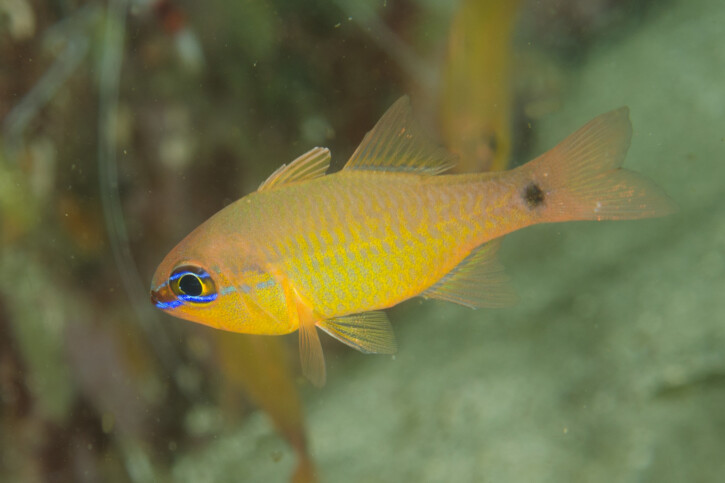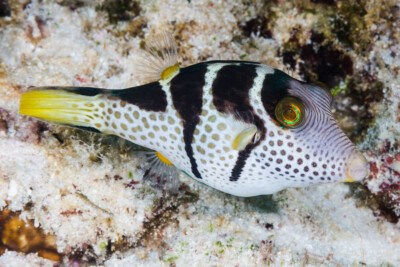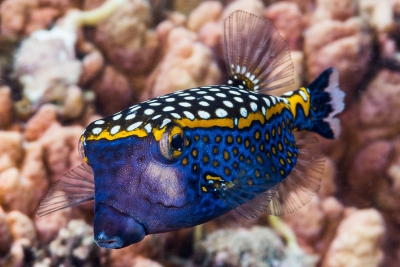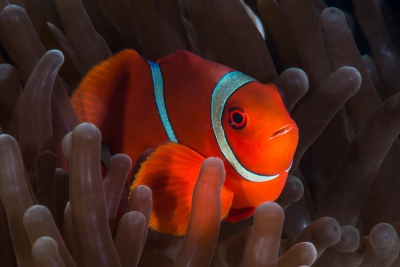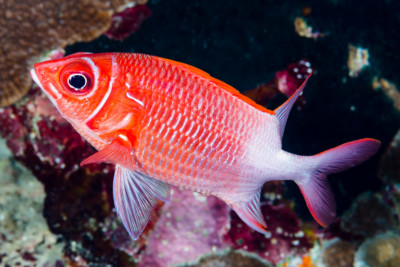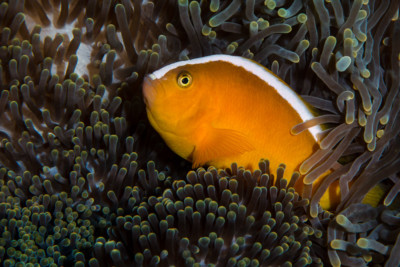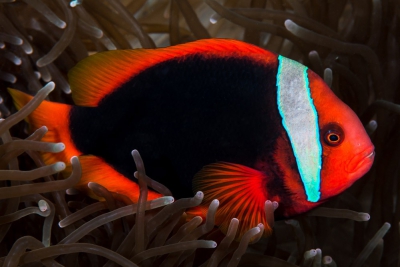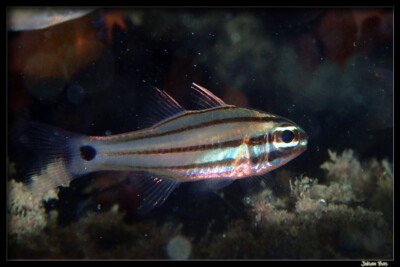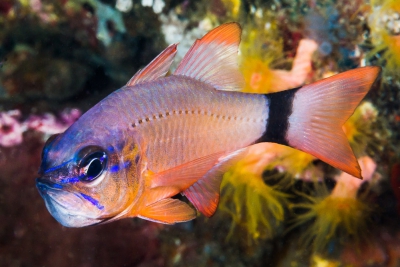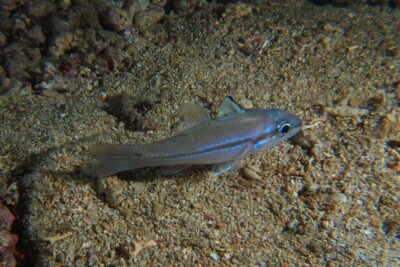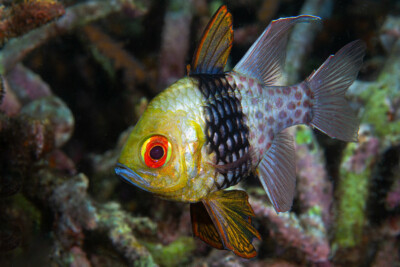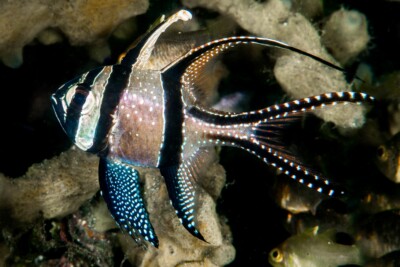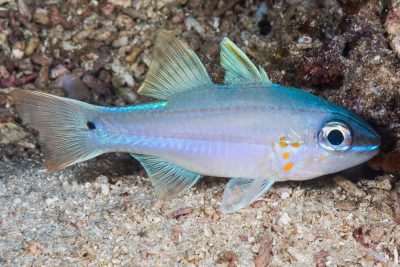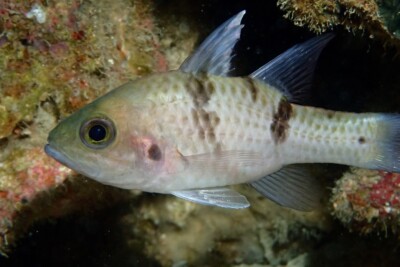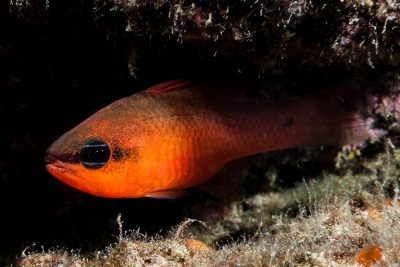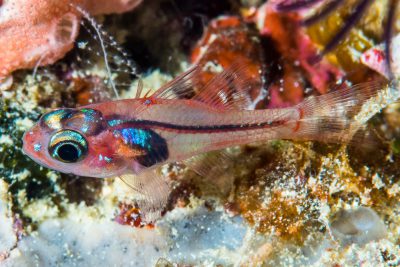Apogon capricornis
| Scientific name | Apogon capricornis |
|---|---|
| Descriptor | Allen & Randall |
| Year of description | 1993 |
| IUCN category (World) | NE |
| Family | Apogonidae |
| Genus | Apogon |
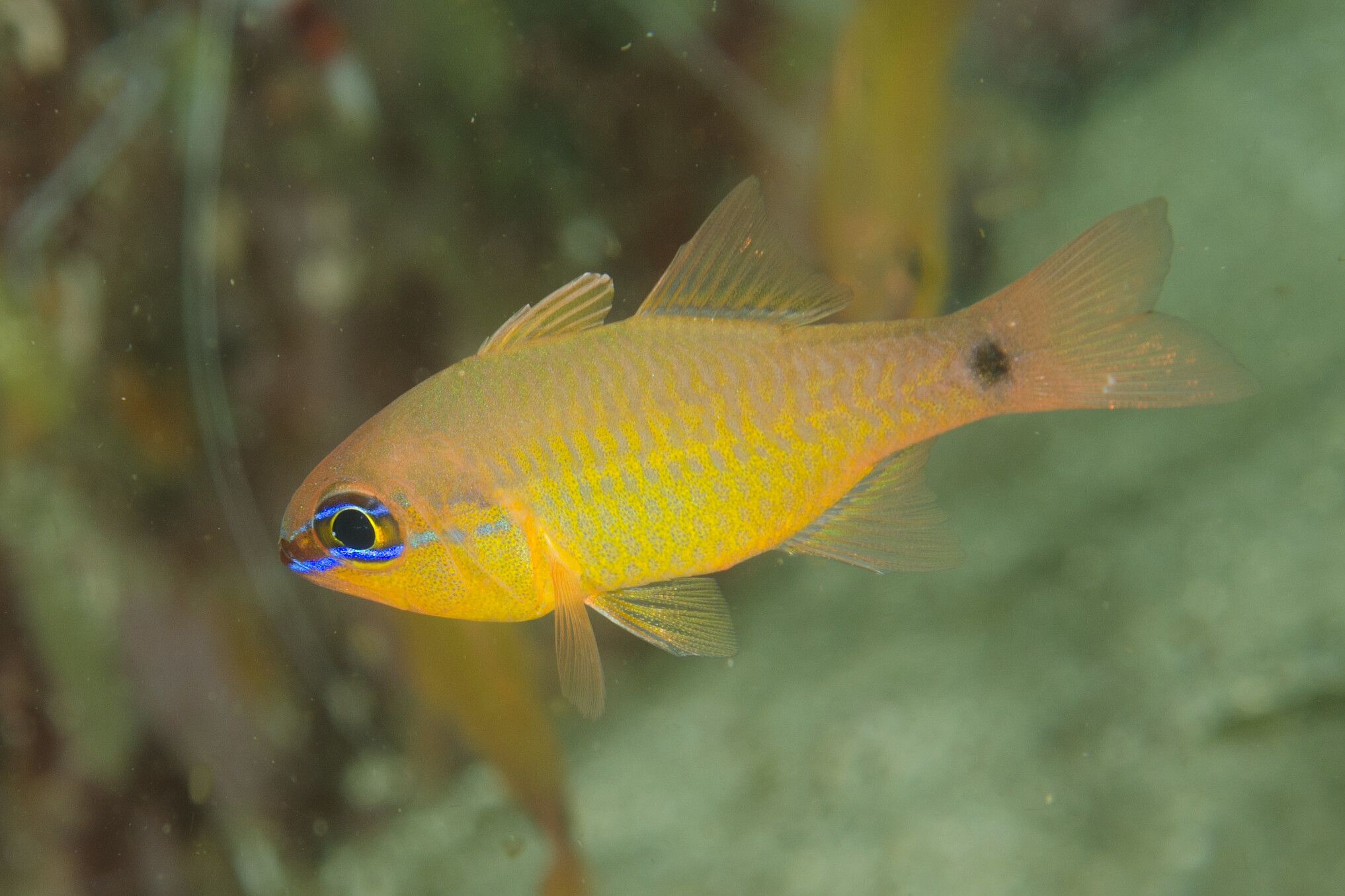

Introduction
Apogon capricornis is a little salt water fish.
This sheet is currently being prepared. The texts currently proposed come from our data model or are being drafted. To request priority for this content, you can write to us HERE.
Who is it?
Morphology
-
Average size4 cm
-
Maximum size5.8 cm
-
ShapeUnclassifiable
-
Patternrayure horizontale
-
Average size4 cm
-
Maximum size5.8 cm
-
ShapeUnclassifiable
-
Patternrayure horizontale
How to recognize This fish ?
Apogon capricornis measures between 4 and 5.8 cm. Given its small size, this species is commonly referred to as a "dwarf" animal. This fish is tricolore with a predominantly bleu, orange and noir body. The also has bleu rayure horizontale.
Behaviour & Life cycle
-
dietcarnivorous
-
Sociabilityliving in small groups
-
territorialYes
-
Way of livingdiurnal
Apogon capricornis is a fish living in small groups naturally found near the bottom. The members of each group are organized around a well established hierarchy. This species is carnivorous . Measuring only a few centimeters, this small species tends to be discreet and hide in the presence of larger neighbors.
This species is territorial and does not appreciate the presence of intruders nearby, especially animals with similar behavior. It can also be virulent toward conspecifics. However, Apogon capricornis has little concern for non-territorial animals.
Reproduction
-
Reproductionovipare incubateur buccal paternel
Apogon capricornis is a fish ovipare incubateur buccal paternel.
Harmless species
This species does not represent any particular threats to humans when encountered in its natural environment.
Origin and distribution
Conservation status of populations (IUCN)
What is its habitat?
Natural environment characteristics
-
Temperature25 - 28 °C
-
Depth2 - 15 m
Biotope presentation
Apogon capricornis is most often found at a depth between 2m and 15m. However, it is not impossible to find this species at other depths.
Species of the same biotope
To go further
Sources & Contributions
Participation & Validation
The Fishipedia team and specialist contributors are committed to providing high-quality content. However, although the information comes from scientific sources or testimonials from specialists, the cards may contain inaccuracies.

Adrien Falzon
Translation
Translation done with the valuable contribution of our translators, who make this information available to a wider audience. We sincerely thank them for their commitment.
Scientific partners
Tags
Species of the same family
Same genus
Species of the same biotope
